Since 2007 a pair of Yellow-vented Bulbul (Pycnonotus goiavier) has been coming to Lena Chow’s home to build a nest incorporating tissue paper The latest visit was in February 2010, but whether it was the same or a different pair, cannot be established (below left). But this time around Lena was prepared with her camera and notebook…
Two eggs were laid in the nest (above centre). On 23rd February, after 14 days of incubation, one egg hatched. The chick was naked and blind (above right). Within two days the chick increased by almost x4 in size. The 2-day old chick developed black pin feathers on the back and wings and the eyes were beginning to open (below left). Whenever there were vibrations around the nest the chick sat up, gaped widely and begged for food (below centre). At 3 days, the chick was just beginning to develop down feathers around the neck and the pin feathers had elongated (below right).
The 5-day old chick developed white pin feathers along the inner neck and two tracts of yellow pin feathers on either side of the ventral part of the body (below left). Note the pinkish bare skin. Short, stubby pin feathers were just emerging along the legs. The wing feathers had broken out of their sheaths at 5 days, exposing the vanes (below centre). The eyes of the chick were open. The 7-day old chick showed reddish inner and outer throat, with wide, yellowish flanges lining the gape (below right).
At 9 days the wing feathers were already developed. Whitish down around the neck area had mostly broken from their sheaths (below left). At 10 days the chick left the nest but remained nearby (below centre). Most of the feathers had already been formed but the tail had yet to develop. The fledgling developed tail feathers at 20 days and was more confident in its flight (below right). It flew off the nest area with the adults in tow. It would take more days (at least another week or so) before it would lead an independent life. This will only come when the juvenile has learnt all the basic skills of survival, especially how to forage, what food to take, how to recognise and avoid predators…

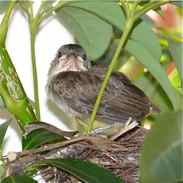
 “172” height=”172″ class=”alignnone size-full wp-image-11010″ />
“172” height=”172″ class=”alignnone size-full wp-image-11010″ />
This time around only one chick fledged from a clutch of two eggs. Will the breeding pair return to Lena’s garden soon and start another brood? Using more tissue paper to line their nest? After all, the Yellow-vented Bulbul breeds three times a year. Lena has already removed the unhatched egg to get the nest ready for the return of the pair. Keep tuned…
All images by Lena Chow.


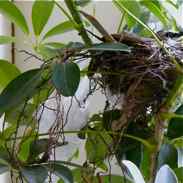
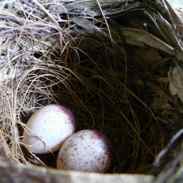

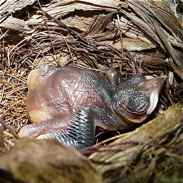

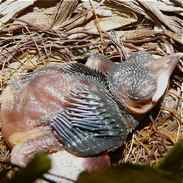

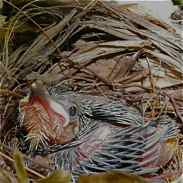
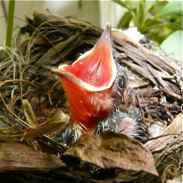







8 Responses
Nice documentation of the YVB, keep it up, Lena ….
This morning at my desk I noted the chicks of a bulbul out my window settling comfortably on a chinese bamboo tree.Two are still there and mama is on a lookout for them.This whole thing and birding is so new to me but its really so interesting.so amazing -have to down load the ppics later.
when you have the opportunity we could do this shooting as they are only in my garde. promise a hot coffee while birding.
Oh it’s so sad that your little bird flew away, Chun See. Maybe the panert birds were publicity shy (like me). It could be that a little bird told them that someone was blogging about their very private family affair on the very public Internet. LOL.But seriously, nobody can alter the course of nature. These things can and do happen – it’s survival of the fittest.
Any takers?
This info is exactly what I was looking for. On May 6 I found a baby bird beneath a tree where I’ve often seen yellow vented bulbuls. It looked like your day 5 picture. The sun was down, it looked like it might rain, and the nest was too high up for me to replace the baby, so I brought him in. Unfortunately where I live in Thailand there is no wildlife rehab nearby that I can take him to. Fortunately he’s still going strong. I’ve been feeding him mushed-up cat food and now he looks like your day 9 picture. I don’t own a bird cage and I have 3 cats and 2 dogs, so protecting him from himself and others as he begins to skitter around might be challenging. Do you have any advice on how to introduce him back into the wilds of my backyard? Should I find a branch for him to perch on and feed him like his mother until he’s able to fend for himself? Any advice or helpful links would be much appreciated. Thank you, and I really enjoy your blog! –Mark
I am afraid we humans cannot act as substitute parent for the chick – to teach it to look for food, how to recognise and evade predators, etc.
Check out the following link…
http://besgroup.talfrynature.com/2008/04/13/should-we-remove-chicks-that-fell-out-of-their-nests/
As it was only 5 days old it was not a fledgling. It would have been better if you could have placed it back in the nest. However it is good that you have been able to take care of it as it would have surely died on the ground. You would definitely need to buy a cage..about 3 ft in length.. where it is able to practise flying and to keep it safe from the cats. Try to put some papaya in the cage but continue to feed him the cat mash. When it starts eating the papaya you can very slowly reduce your mash feeding. Start introducing worms and insects or fruitflies too. Once it is fully weaned ie feeding on its own for a few weeks, you can try to release it. Place the cage in your garden for a few days for it to get used to the surroundings. When you release it, continue to place food near the cage so it it can return to feed. A baby tailor bird found in Sungei Buloh returned for 5 weeks for supplement feeds before it stopped coming back altogether.
See story here http://www.sbwr.org.sg/wetlands/text/96-3-2-2.htm.
Good luck and I hope this baby survives to adulthood.